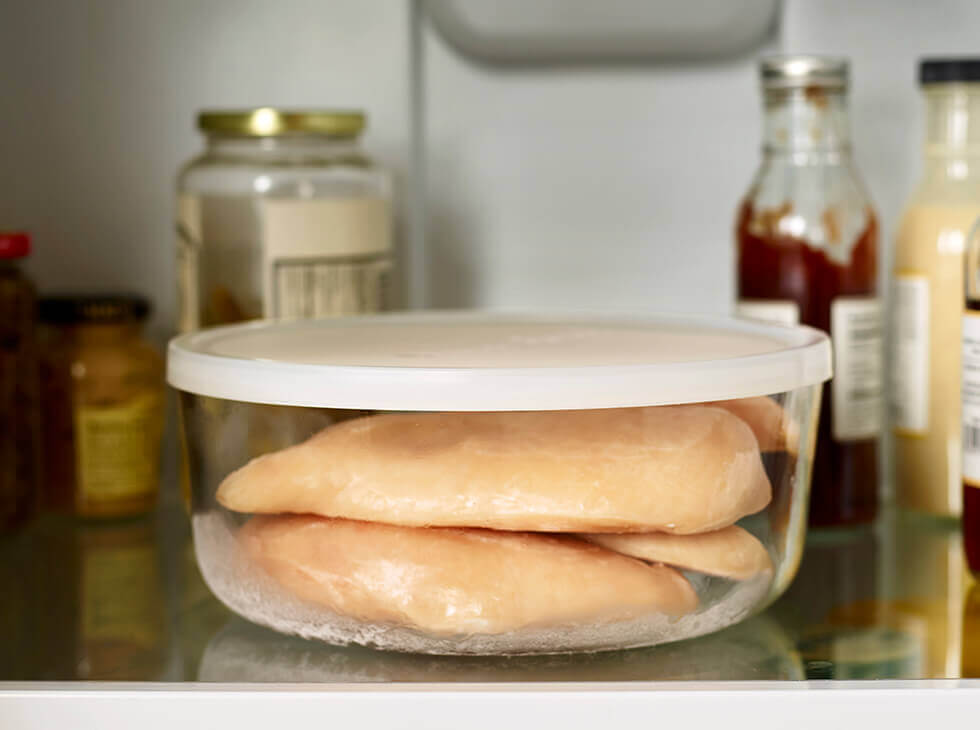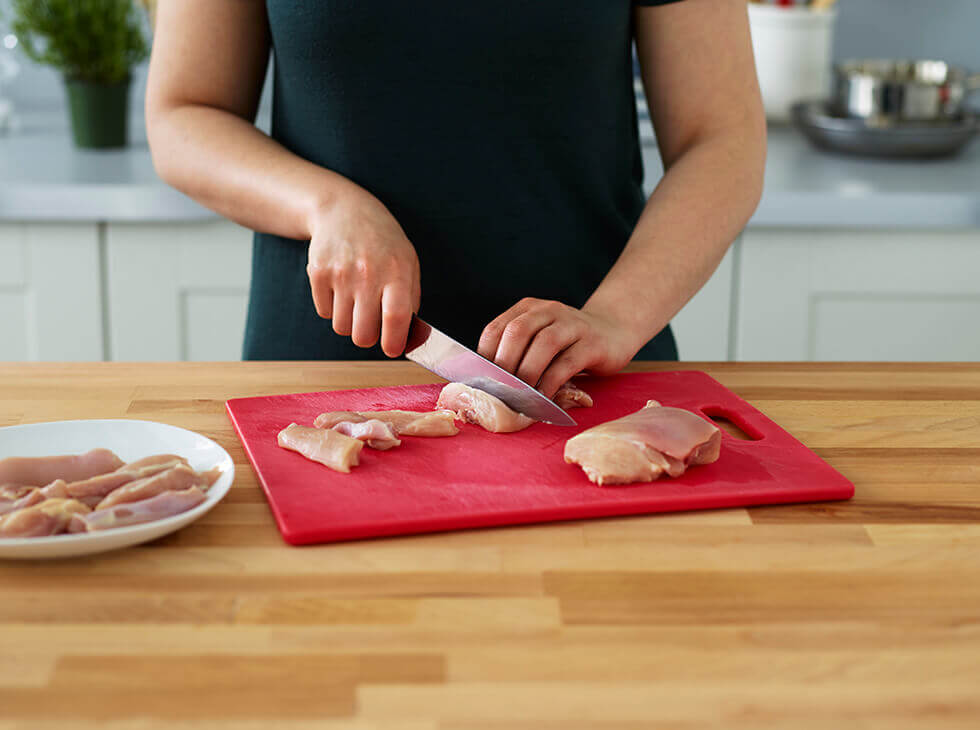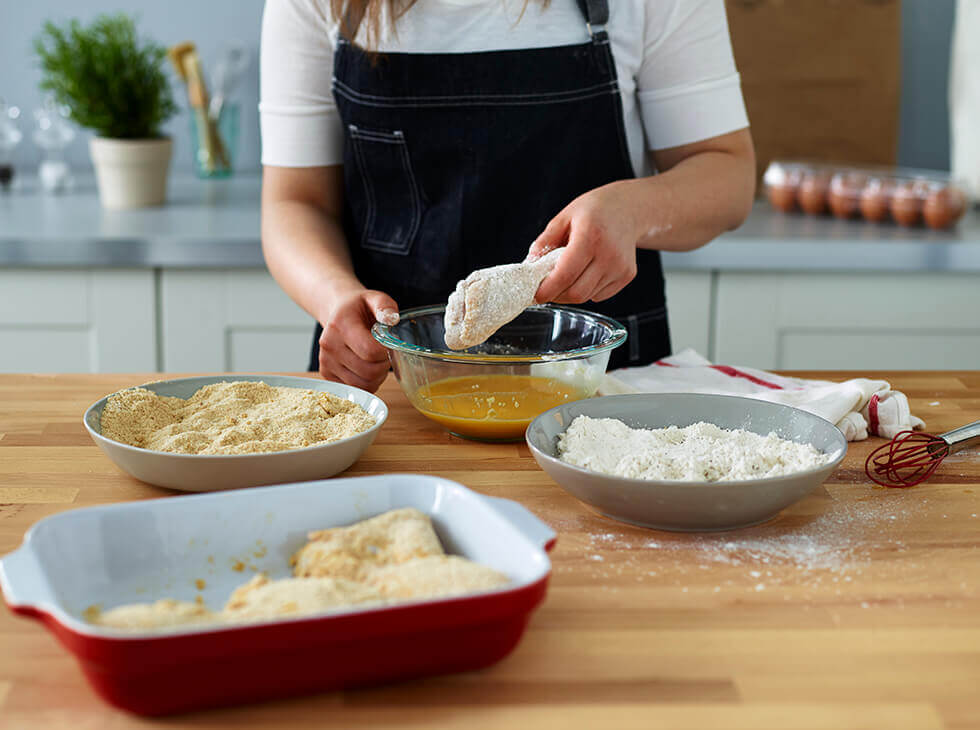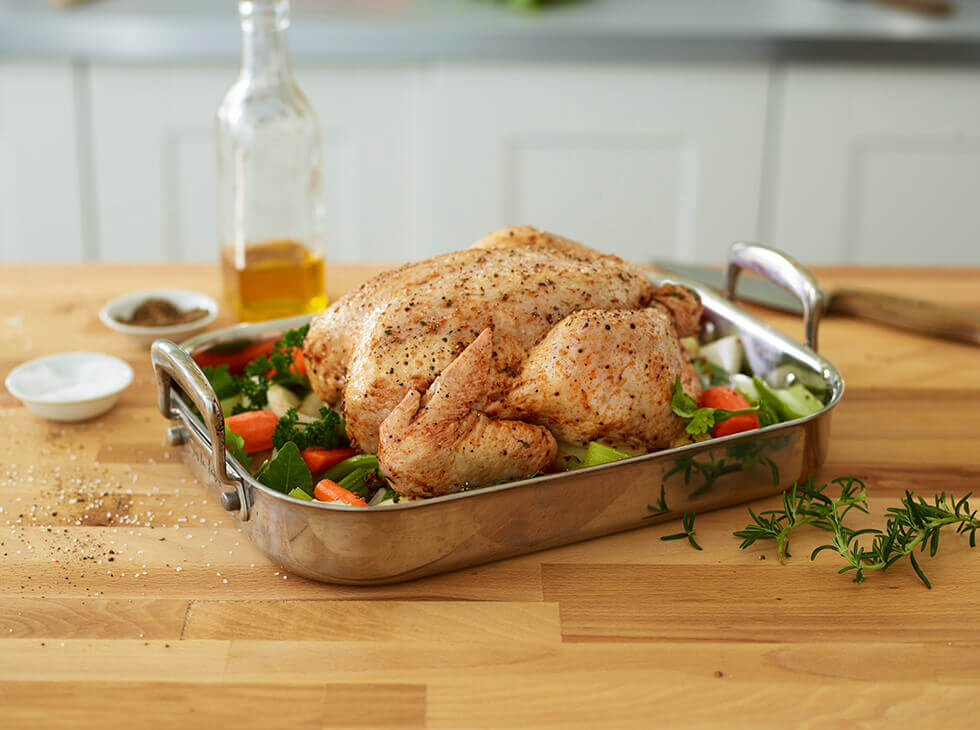
Thawing
If your chicken is frozen and you need to thaw it, follow one of these methods:
Refrigerator (preferred method): Allow one to two full days for large items to thaw. The benefit to refrigerated thawing is that they can be kept in the fridge an additional couple of days after defrosting. Keep raw chicken on bottom shelf of fridge away from other foods.
Cold Water: Place the product, either in its airtight packaging or a leakproof bag, into a large sink. Submerge under cold water. Change the water every 30 minutes to keep cold. Sanitize the sink when you’re done.
Microwave: This is not the preferred method. Only thaw a few portions at a time in the microwave, and be sure to follow the manual’s defrost instructions. Cook immediately after thawing.
Real Tip: You should never use warm water to thaw, because it could partially cook the chicken.

Working with Raw Meat
When cutting chicken, always use a plastic or glass cutting board. Wood boards can absorb juices and are much harder to clean. It’s also a good idea to use different cutting boards for raw and cooked chicken. Keep other foods, like fruit and vegetables, away from raw chicken.
Latex gloves cut down on spreading bacteria with your hands. Make sure to properly dispose of gloves to avoid cross contamination. And of course, always wash your hands thoroughly with soap and water after handling raw chicken. When dealing with raw chicken, use paper towels rather than cloth and do not keep any nearby.
Real Tip: Cut against the grain of the meat — that’ll help keep it tender.

Breading
Nothing beats well-breaded chicken. If you’re willing to get your hands a little dirty, here’s how it’s done. Grab three bowls and fill them up with the following:
- Cornstarch & seasoning
- Egg wash, buttermilk, & seasoning
- Flour or bread crumbs
Dip each piece of chicken into the cornstarch, shake off any excess, and run it through the egg wash. Let it drip, then lay both sides of the chicken in the bread crumbs before setting it aside.
Real Tip: Add crushed nuts to your flour or bread crumbs to give a tasty, satisfying crunch to your chicken.

Marinating & Seasoning
To give your chicken big flavor, all it takes is a little advance planning. Just put the marinade and chicken in a sealed bag and let it sit in the refrigerator at least two hours before cooking. Be sure to keep raw chicken away from other food items. Of course, more time (like overnight) means more flavor — but you’ll need to shake it up every few hours. This works for whole birds as well. Do not reuse marinade.
Real Tip: When buying fresh chicken, divide it into bags with marinade inside and freeze. When you’re ready to enjoy, the chicken will marinate while it thaws.

Whole Bird
Getting a whole bird ready isn’t the big production most people think it is. It can be pretty easy. Rub the bird with oil. Season the chicken inside and out with salt, pepper, herbs, and spices to your liking.
Real Tip: For a more moist and flavorful bird, separate the skin from the meat and stuff pats of butter underneath the skin. You can also add seasoning there.